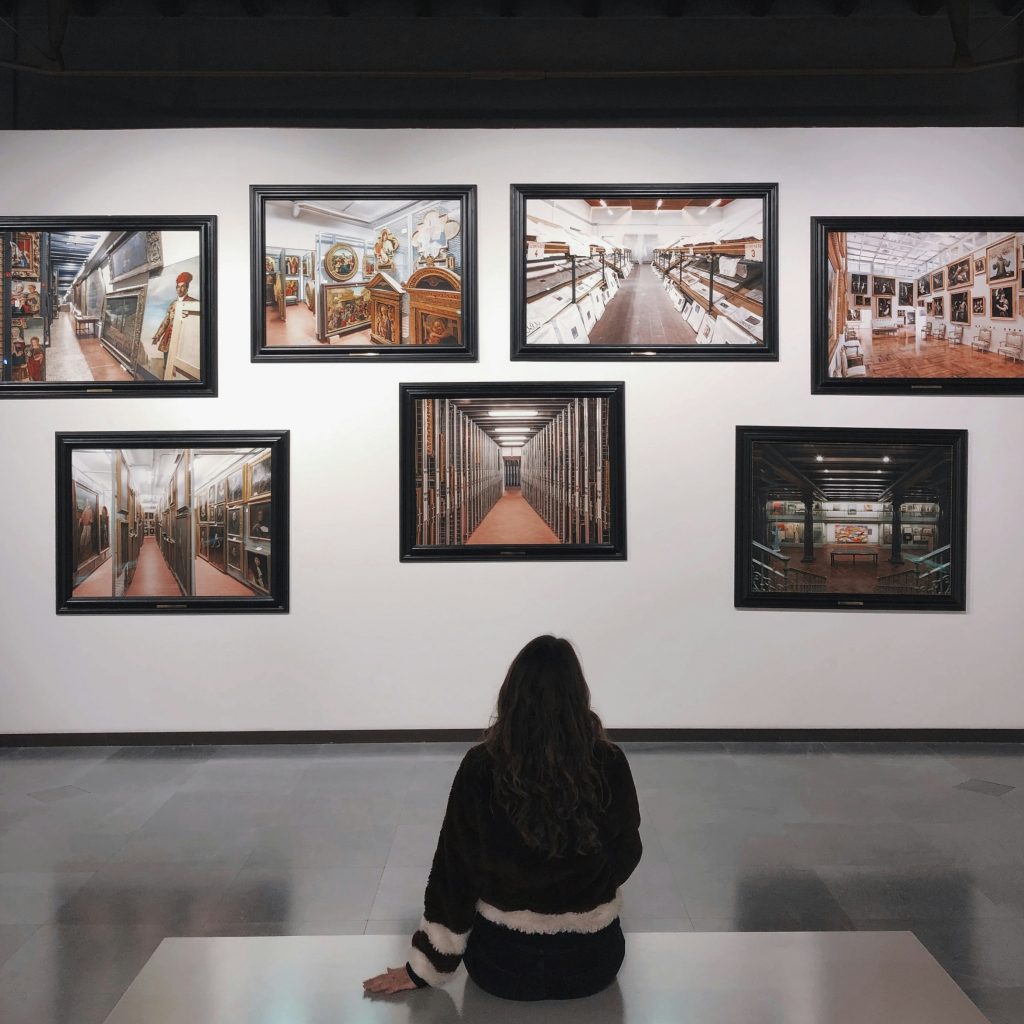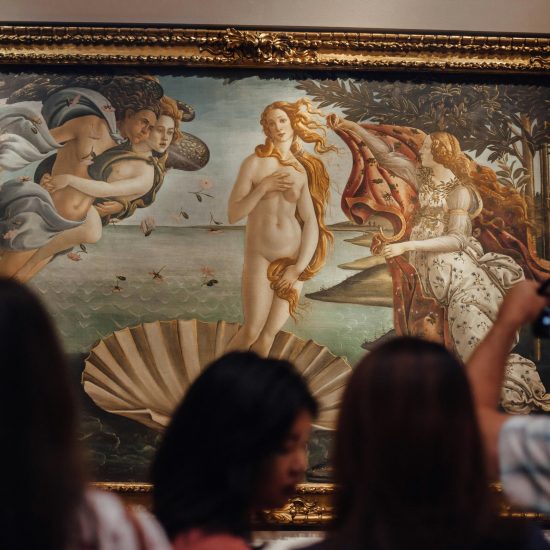The Uffizi Gallery, located in Florence, Italy, is one of the most famous and visited art museums in the world. With its vast collection of Renaissance art, it offers an unparalleled glimpse into the artistic achievements of the period. This article delves into the history, architecture, notable artworks, visitor information, and much more about this iconic gallery.
1. The History of the Uffizi Gallery
The Uffizi Gallery’s origins date back to 1560 when Cosimo I de’ Medici, the Grand Duke of Tuscany, commissioned Giorgio Vasari to design the building. Initially intended as offices for Florentine magistrates (Uffizi means offices in Italian), the building soon housed the extensive art collection of the Medici family.
Throughout the centuries, the collection grew as successive generations of the Medici family added works of art, making the Uffizi a repository of some of the finest pieces of Renaissance art. The gallery was officially opened to the public in 1765, offering art lovers an unprecedented opportunity to view these masterpieces.
In the 19th and 20th centuries, the gallery underwent several renovations and expansions. These efforts have helped to preserve the artworks and enhance the visitor experience, ensuring that the Uffizi remains a world-class destination for art enthusiasts.

Source: https://unsplash.com/photos/brown-and-black-wooden-guitar-and-black-leather-bag-Agwv1mKDUnc
2. Architectural Marvel: The Design of the Uffizi Gallery
Giorgio Vasari’s architectural design for the Uffizi is a masterpiece in itself. The long, narrow building is a testament to Renaissance architecture, characterized by its symmetry, proportionality, and use of classical elements. The Uffizi Gallery layout, with its series of connected rooms and corridors, creates a seamless flow for visitors exploring the collection.
One of the most striking features of the Uffizi is the Vasari Corridor, a covered passageway that connects the Uffizi with the Pitti Palace across the Arno River. This corridor allowed the Medici family to move freely and safely between their residences and today, it houses a collection of self-portraits and other artworks.
The Uffizi’s recent renovations have maintained the integrity of Vasari’s design while incorporating modern amenities to enhance the visitor experience. These improvements include climate control systems to preserve the artworks and state-of-the-art lighting to showcase the pieces in the best possible manner.
3. Masterpieces of the Uffizi Gallery
The Uffizi Gallery is home to an unparalleled collection of Renaissance art, with works by some of the most renowned artists of the period. Among the most famous pieces are:
1. Botticelli’s “The Birth of Venus”: This iconic painting, created in the late 15th century, depicts the goddess Venus emerging from the sea on a shell. It is celebrated for its beauty, composition, and symbolism.
2. Leonardo da Vinci’s “Annunciation”: An early work by the master, this painting showcases Leonardo’s skill in depicting delicate details and atmospheric perspective. The Annunciation is a profound example of his talent and vision.
3. Michelangelo’s “Doni Tondo”: This circular painting, also known as The Holy Family, exemplifies Michelangelo’s mastery of the human form and his unique use of color and composition.
4. Caravaggio’s “Medusa”: A striking piece that portrays the head of Medusa with a mix of horror and beauty, showcasing Caravaggio’s dramatic use of light and shadow.
These masterpieces are just a few highlights of Uffizi’s extensive collection, which spans from ancient sculptures to Baroque paintings, offering visitors a comprehensive view of art history.
4. Exploring the Uffizi Gallery: Tips for Visitors
Visiting the Uffizi Gallery can be an overwhelming experience due to its vast collection and popularity. Here are some tips to make the most of your visit:
1. Plan Ahead: The Uffizi is one of the most visited museums in the world, so it’s essential to book tickets in advance. This not only secures your entry but also helps avoid long queues.
2. Take a Guided Tour: To fully appreciate the depth and significance of the artworks, consider joining a guided tour. Knowledgeable guides can provide insights and context that enhance your understanding and enjoyment of the collection.
3. Allocate Enough Time: With so much to see, it’s crucial to allocate sufficient time for your visit. Plan for at least three to four hours to explore the main highlights and perhaps even more if you’re an art enthusiast.
4. Use the Audio Guide: If you prefer to explore at your own pace, the Uffizi offers audio guides that provide detailed information about the artworks and their historical context.

Source: https://unsplash.com/photos/woman-in-black-long-sleeve-shirt-sitting-on-floor-g55bG1O5Lf0
5. The Uffizi’s Impact on Art and Culture
The Uffizi Gallery has had a profound impact on art and culture, not only in Italy but around the world. Its extensive collection has inspired countless artists, historians, and scholars, contributing significantly to the study and appreciation of Renaissance art.
The gallery’s influence extends beyond its walls through various educational programs, exhibitions, and collaborations with other museums. These initiatives help to promote the understanding and appreciation of art among diverse audiences, fostering a global appreciation for the cultural heritage preserved within the Uffizi.
In recent years, the Uffizi has embraced digital technology to reach a broader audience. Virtual tours, online exhibitions, and educational resources make it possible for people worldwide to engage with the gallery’s collection, ensuring that its treasures are accessible to all.
6. Notable Temporary Exhibitions
In addition to its permanent collection, the Uffizi Gallery hosts a variety of temporary exhibitions that highlight different aspects of art history, contemporary art, and cultural themes. These exhibitions provide fresh perspectives and bring new audiences to the gallery.
1. “A Renaissance Masterpiece: Donatello and the New Renaissance”: This exhibition focused on the works of Donatello, exploring his influence on the Renaissance and his lasting legacy in the art world.
2. “Contemporary Dialogues”: Showcasing contemporary artists whose works are inspired by or in dialogue with Renaissance art, this exhibition bridges the gap between historical and modern artistic practices.
3. “Women Artists of the Renaissance”: Highlighting the often-overlooked contributions of female artists during the Renaissance, this exhibition sheds light on their significant impact on the art world.
These temporary exhibitions enrich the Uffizi’s offerings, providing visitors with new insights and fostering a dynamic and evolving relationship with art history.
7. Practical Information for Your Visit
When planning your visit to the Uffizi Gallery, it’s essential to be aware of practical information to ensure a smooth and enjoyable experience.
1. Opening Hours and Tickets: The Uffizi is typically open from 8:15 AM to 6:50 PM, Tuesday through Sunday. It is closed on Mondays, January 1st, and December 25th. Tickets can be purchased online, and it is highly recommended that you book in advance to avoid long lines.
2. Getting There: The Uffizi Gallery is located in the heart of Florence, making it easily accessible by public transportation, walking, or taxi. The gallery is a short walk from other major attractions like the Florence Cathedral and the Ponte Vecchio.
3. Facilities and Amenities: The Uffizi offers various amenities, including a café, restrooms, and a gift shop where visitors can purchase souvenirs and books related to the gallery’s collection. The gallery is also wheelchair accessible, with elevators and ramps to accommodate visitors with mobility issues.
4. Photography and Conduct: While photography without flash is generally allowed, it is important to respect the gallery’s rules and other visitors. Maintain a respectful distance from the artworks and avoid touching any exhibits.
Conclusion
The Uffizi Gallery is a treasure trove of artistic masterpieces and a testament to the rich cultural heritage of Florence and the Renaissance. Whether you are an art aficionado or a casual visitor, the Uffizi offers an unforgettable journey through the history of art. By planning and immersing yourself in the gallery’s vast collection, you can fully appreciate the beauty and significance of this world-renowned institution.




